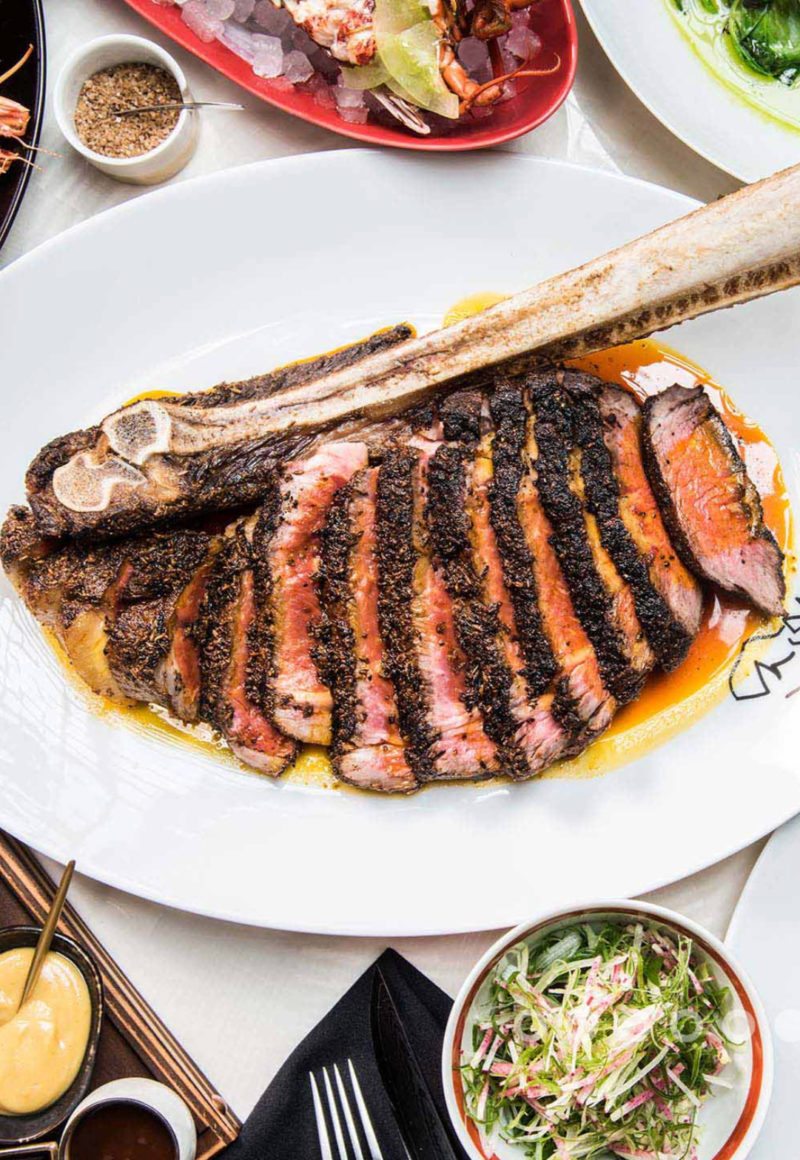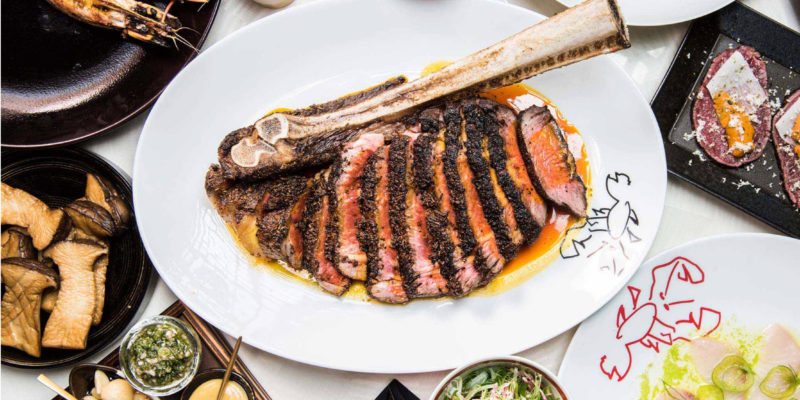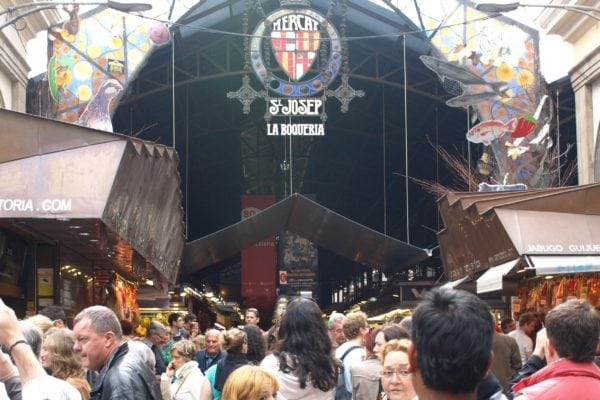Skift Take
Dark and dramatic lighting can be moody... and annoying. We're glad the days of our dining companions pulling out phones as flashlights are numbered. (Looking at you, dad.)
— Kristen Hawley
A flashlight didn’t used to be an essential piece of equipment to get through dinner at a New York restaurant.
But about a decade ago, a Brooklyn-ish aesthetic took over the city, and dining rooms got darker. Wall panels of reclaimed wood dimmed the mood, and high overhead ceiling lights were turned down—or replaced by weak Edison bulbs—and a brooding hipster ambiance took over even the fanciest of fine dining spots. Diners needed to break out their phones, not just to take pictures of their dishes, but to catch a glimpse of the menu.
That’s changing. Look around restaurants at dinner time, and you can actually see—whether you’re sitting at one of the spotlighted hanging banquettes at the Lobster Club in the Seagrams Building or the funky Thai joint Ugly Baby in Brooklyn.
Anita Summers, lighting expert at the Johnson Studio at Cooper Carry, a design firm that works with restaurants and hotels around the country, has seen the ambiance transition from moody to airy. “Dark lighting can be attributed to that ‘Brooklyn-esque’ design, but it dates back even further to the time of white table cloths and tight dramatic light in the middle of the table,” Summers explains. “It was all about the food, so that’s what the lighting focused on.”
That’s changed, in part due to social media. Summers notes that now, diners want to witness the entire experience for themselves, and for sharing. “In addition to the food, it’s pictures of friends, overhead table shots, floor tiles, original art work, anything that captures the restaurant’s ‘vibe,’” she says.
But there are other factors at play in the shift, besides the need to show the world how good a time you’re having.
The Japanese Influence
If there’s one cuisine that’s been on a tear in New York, it’s Japanese. In the past 18 months, dozens of restaurants representing the cuisine, ranging from the elegant Mifune to the standing steakhouse Ikinari to decadent sushi counters such as the Michelin-starred Sushi Ginza Onodera. And, of course, all that ramen. Many of these restaurants have the kind of lights you’d find at a doctors office. That’s because the Japanese believe that transparency in dining is important.
At the $7 million, 190-seat Sen Sakana on West 44th Street, where Nikkei (Japanese Peruvian) cuisine is on offer, the restaurant is brightly lit during the day with a pricey installation of lights in the center of the ceiling and LED strips around the perimeter the sushi bar and the banquettes. Owner Allan Wartski says lunch is when the restaurant does 80 percent of its business. “We created an environment where businessmen and women can work—review documents, go over deals. We didn’t want the place to seem too romantic for the midtown lunch crowd.”
At Okuda, the luxe new eight-seat omakase spot in Chelsea, the street outside is already dark for the first seating at 6 p.m. Yet inside, the place has the kind of lighting that reminds you of a lab. It’s a purposeful move by chef/owner chef Mitsuhiro Endo: “Everything should be in view of the customer,” he says. “There are no masks, there are no secrets.“
Midtown Revamps
Also lightening up are some major restaurants in midtown. The new Lobster Club installed pinpoint lights over the chartreuse banquettes and throughout the restaurant. “The lighting at the Lobster Club is special,” says co-owner Jeff Zalaznick. “We have achieved a balance of brightness and intimacy that is hard to explain. Credit to the best in the business, [designers] Peter Marino and Herve Descottes.”
Long-standing restaurants have adopted the look, too. Michael Lomonaco, chef of Porter House, notes that his restaurant in the Time Warner Center had plenty of natural light from a wall of windows, so they decided to maximize it in a recent renovation. “Lighting and a warmer color palate were central to our vision. Working with our architect Jeffrey Beers, we added pearlescent wall coverings, which bounce soft glows of light throughout the main dining room, as well as accent mirrors and a polished chrome finish.”
The restaurateurs behind nearby fish mecca Milos also made a brighter dining room a focal point of their renovation. Chef and owner Costas Spiliadis wanted diners to feel transported. “An open, airy dining room evokes memories of a leisurely afternoon on the Mediterranean, and it was with that mindset that we set out to redesign our main dining room in New York City. The original hard wood flooring was replaced with imported Greek marble—the same marble used on the Parthenon—and the mirrored back bar adds new brightness.”
The Paint Job
Not everyone thinks it’s all about the lights, though. Gabriel Stulman, whose West Village restaurant empire includes Joseph Leonard and Fedora, didn’t put in brighter lights when he opened his new Fairfax in the neighborhood. But he did paint the walls and ceilings white to lighten up the vibe at the all-day café. “It’s about people designing lighter, brighter spaces,” he says, and he catalogs some of the changes. “If your floors used to be stained dark walnut, now they’re natural oak. Your tables are now honey-colored, not black. Your bar is marble, not mahogany.”
Stulman sees another factor at work in making dining rooms brighter: money. “People used to have smaller budgets to build restaurants. Today, people are spending a lot more money on their buildouts, and that entails consulting more with sophisticated lighting designers. The effect: a brighter room.”
©2017 Bloomberg L.P.
This article was written by Kate Krader from Bloomberg and was legally licensed through the NewsCred publisher network. Please direct all licensing questions to [email protected].
![]()




